
Curious about the magic behind the scenes? Dive into the untold tales and the making of our stories by subscribing to our newsletter.
Where the words come from, Courtney Dauwalter cannot say. She doesn’t plan her mantras ahead of time. She just lets them unfold. She listens to her instincts, which is pretty much the same way she’s become the best female trail ultrarunner in the world, if not the best ultrarunner of all time.
Her default mantra is, “This is fine,” which couldn’t help but make me think of that famous cartoon, the one where the dog sitting in a room engulfed in flames mutters the same mantra to himself. That’s what I imagine it’s like to run through the kind of pain and fatigue Dauwalter deals with on a regular basis; that’s what I imagine it must be like to regularly complete race courses that extend for a hundred miles or more. But Dauwalter doesn’t like to stick to just one thing. Sometimes, as she puts one foot in front of the other on another grueling course – as she slips into the mental and physical state she refers to as “the pain cave”– other mantras just bubble up from deep inside her, and she goes with those instead.
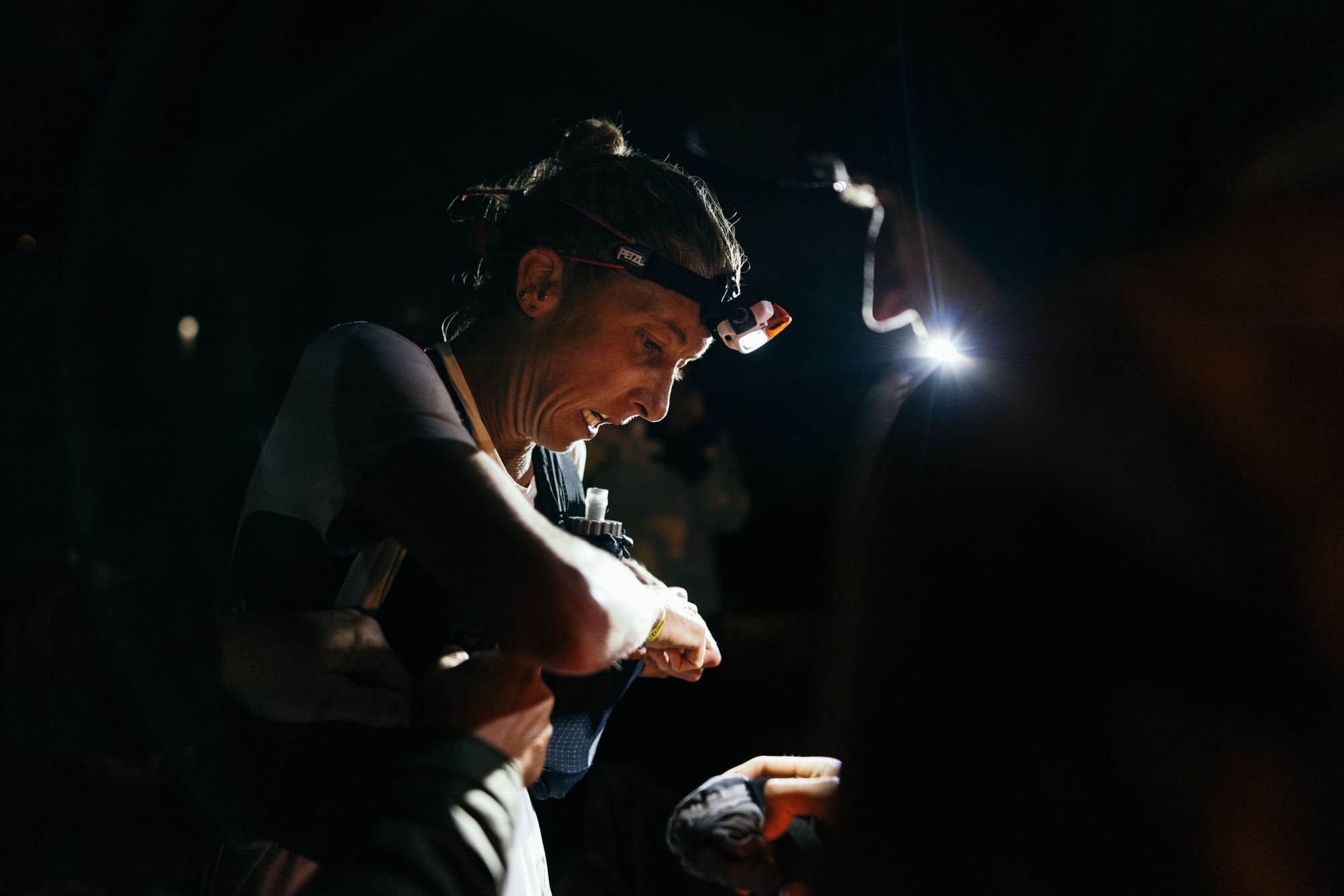
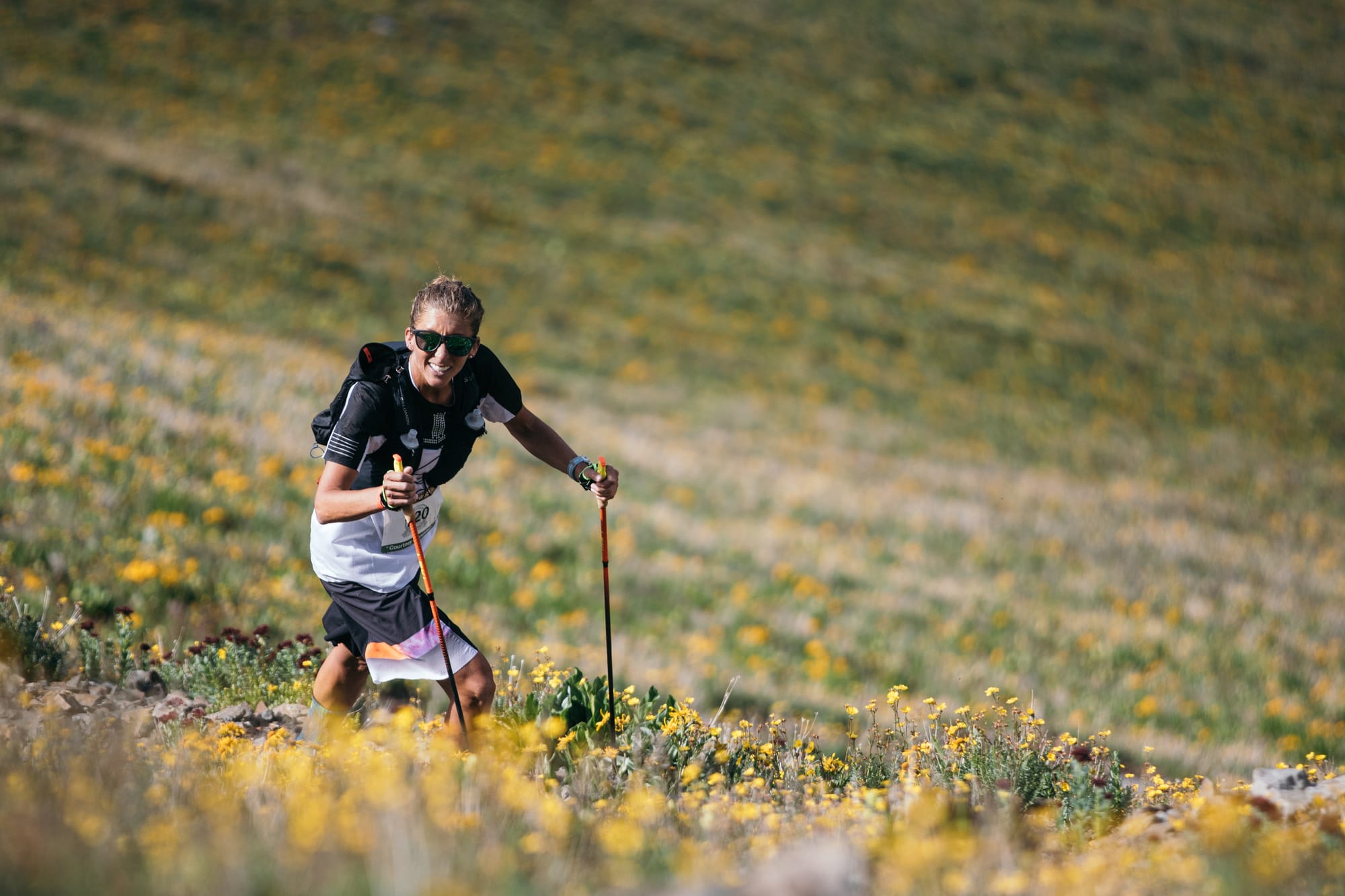
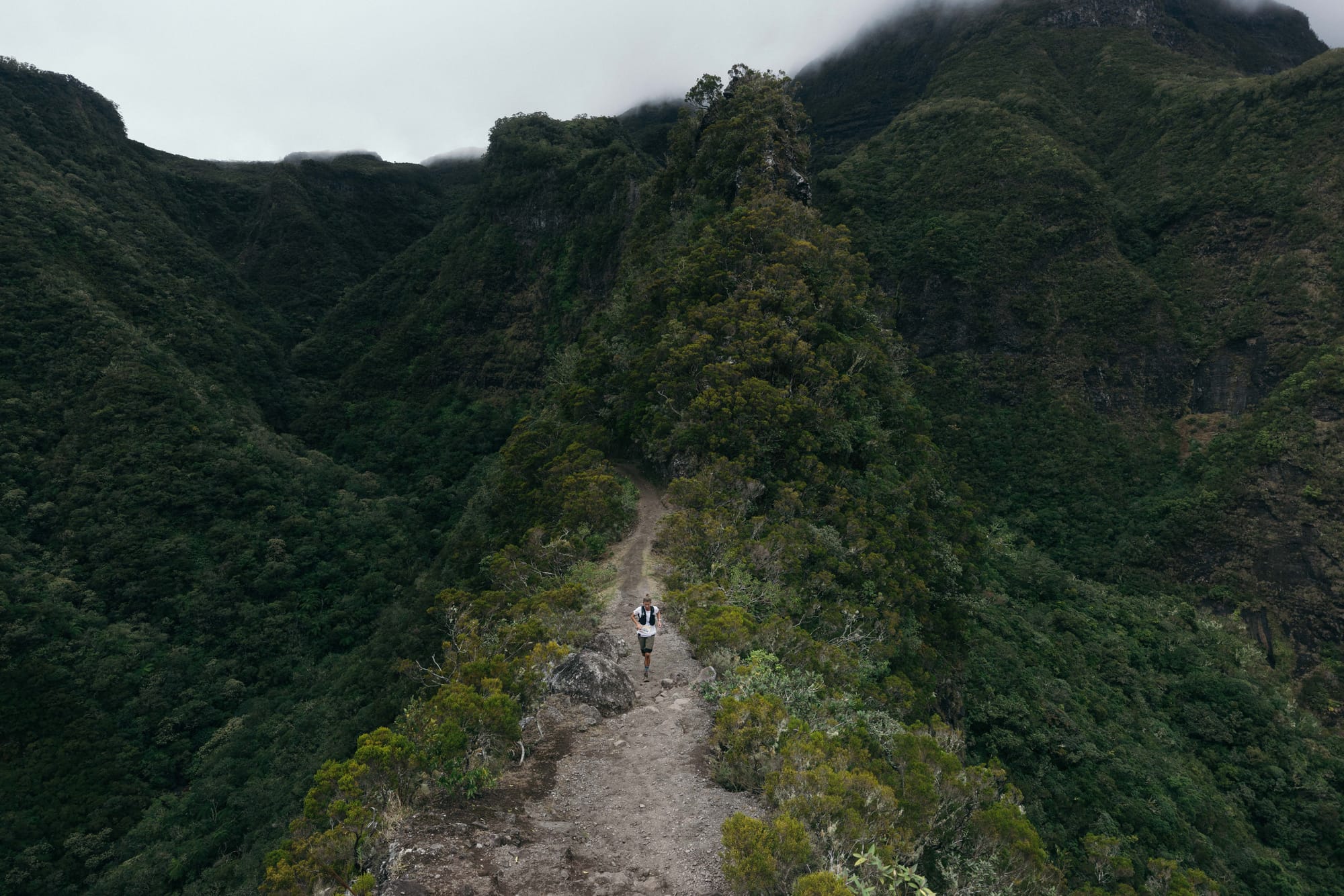
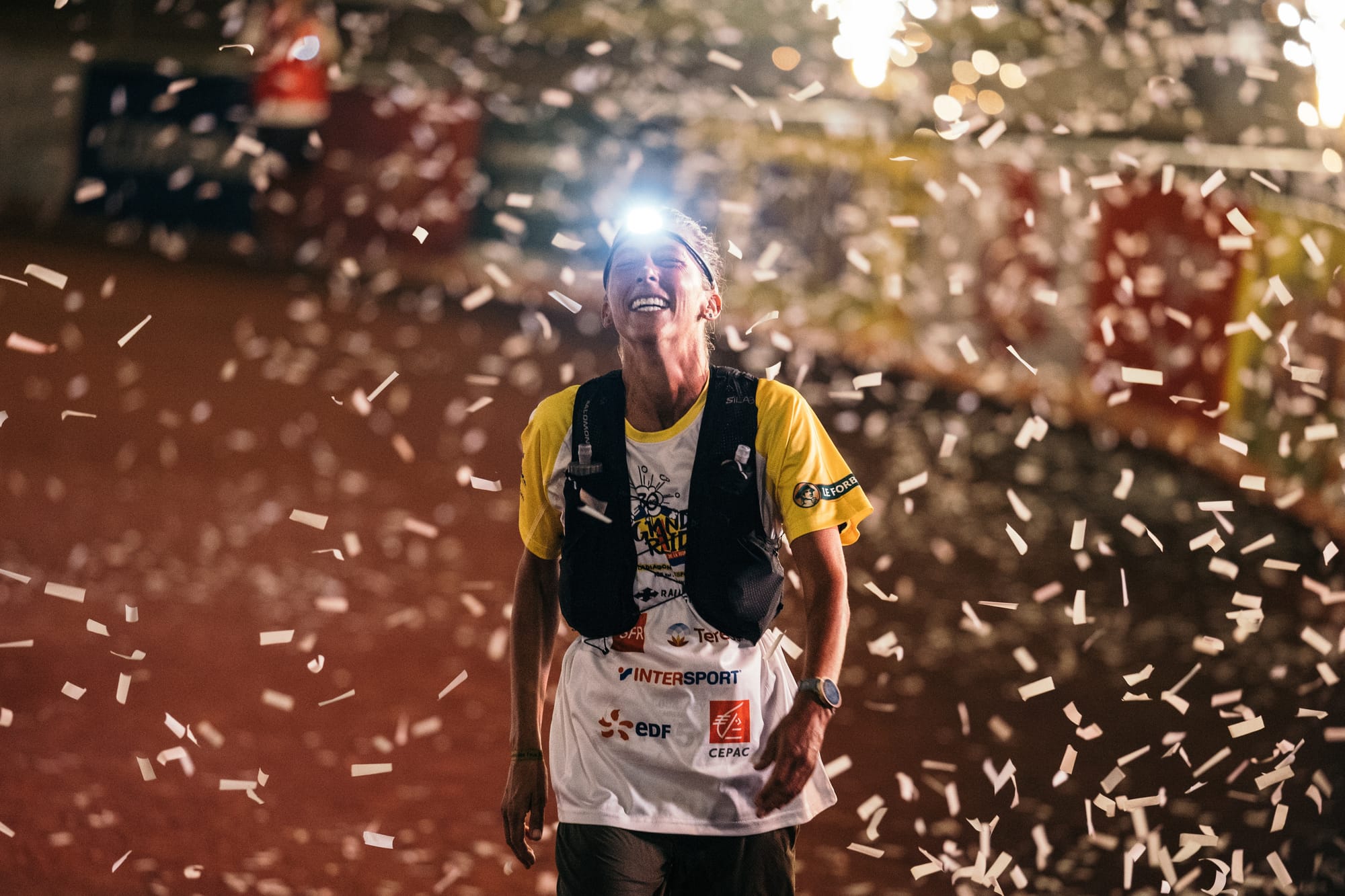
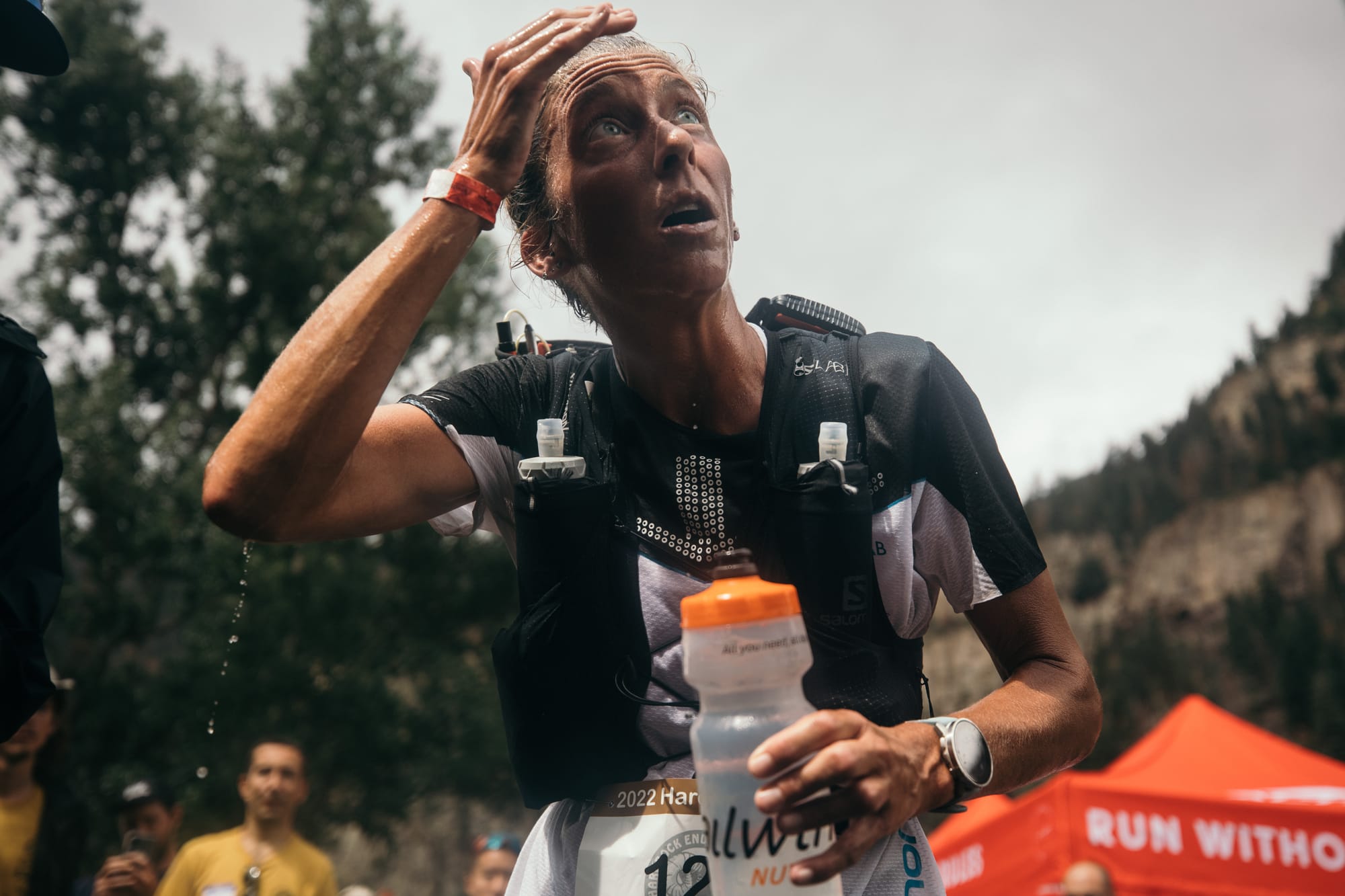
Courtney Dauwalter's passion for candy, nachos and beer collides with her budding superstar status as an endurance runner. [Alexis Berg photos]
One day late last summer, midway through the Ultra-Trail du Mont Blanc – what many believe to be the most competitive trail ultramarathon in the world, roughly 106 miles through the French, Italian and Swiss alps – Dauwalter found herself struggling. Like, really struggling. This was not the kind of exploration into her own limits that Dauwalter savors, and that she is perhaps better at pushing through than any other athlete in the world. This was the kind of fatigue that threatened to keep her from finishing a race. And this was not just any race – this was a potentially historic moment, both for Dauwalter and for the sport of trail-racing itself.
Already that summer, she’d shattered the course records on two of trail-running’s most prestigious races, the hundred-mile Western States Endurance Run in California, and the Hardrock 100, a high-altitude course that wound through Colorado’s San Juan Mountains. If she won the Ultra-Trail du Mont Blanc (UTMB), it would be right up there with the most impressive performances anyone had ever accomplished in the history of ultrarunning.
Dauwalter, of course, wasn’t trying to think about any of those things. She tried to go into the UTMB imagining that this was her only race of the summer. She hadn’t even really thought about doing the UTMB until she won the other two, and then figured, Why the hell not? Let’s give this a go. Let’s see what it would feel like to finish three hundred-mile races over the course of a couple months.
Dauwalter’s ethos is about pushing the limits of what’s possible. When you’ve got the opportunity to do something crazy or difficult, she believes, why wouldn’t you take that opportunity? So off she went through the Alps. But her body had other ideas. “Around mile 60, I completely ran out of gas,” Dauwalter tells me via a video call from her home in Leadville, Colorado. “My quads were blown. My muscles were just like, they had nothing left to give, and my whole body felt like the plug had been pulled out of the wall.”
This wasn’t just the pain cave (which we’ll explain more about in a minute). This was a pain that burrowed deep into her soul; this was the ravages of a groundbreaking summer coming back on her. And as Dauwalter endeavored to keep on moving, these were the words she repeated to herself, over and over again:
Robot robot. Robot robot. Robot robot…
“O.K.,” I ask her. “Can you explain that to me?”
“I don’t know,” she jokes. But in truth, she knows. Her instincts had steered her here for a reason, as they always did. “I just needed my legs to do the things I knew they could do. So it was like, embody a robot. Just keep swinging ‘em like you’ve been trained to do, and they’ll get you toward the finish line.”
For those last forty miles or so, the chant went on in her head: Robot robot. Robot robot. All the way to the finish line. All the way to a third ultramarathon victory in a single summer. All the way to what one fellow female ultrarunner told Outside magazine was “truly hard to conceptualize…She’s one of those humans who defy even the concept of an outlier.”
A quote like that almost makes Dauwalter sound like an actual robot. But that’s the funny part: If there’s one thing no one would ever mistake Dauwalter for, it’s a robot. At the age of 38, she is not merely the best at what she does; she is also one of the most colorful characters ever to grace the sport. And she’s done it all by trusting her instincts, and by being fully and completely herself.
Some ultrarunners might be driven toward the sport as a method of enforcing routine on their lives; perhaps they do it to chase away their own demons. For Dauwalter, it’s mostly about chasing the rush of nachos.
I mean, that’s not all there is. There’s also candy. And beer.
Her proclivity for junk food is one well-known element of a training plan that doesn’t adhere to any of the ascetic ideals you might expect from runners of hundred-mile races. When she gets hungry on the course, she eats jelly beans and stroopwafels; the night before she ran the Western States Endurance Run this summer, she dined on pizza. “I pretty much always eat all the same,” she says. “I don't have groups I cut out or things that I consider indulgences or bad foods.”
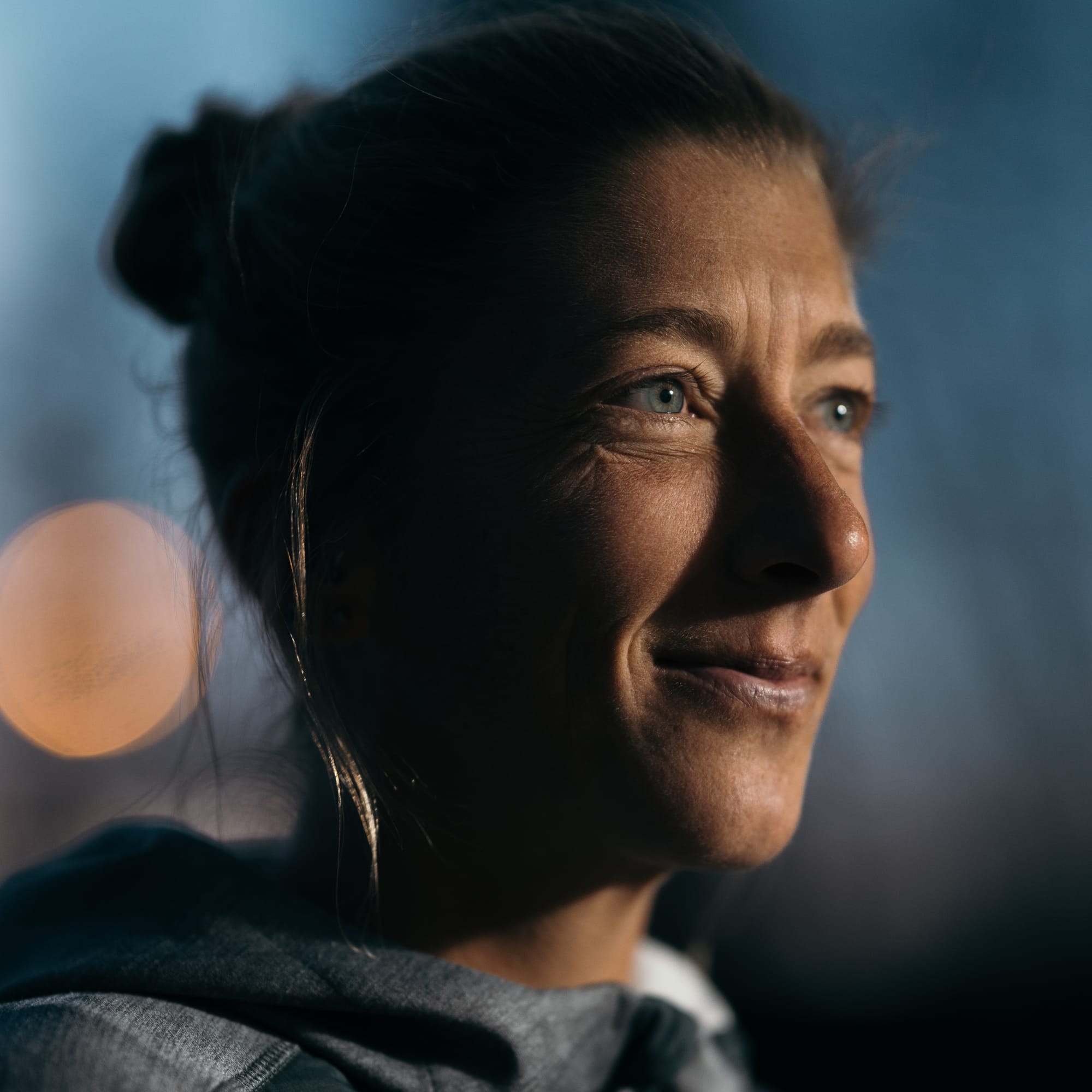
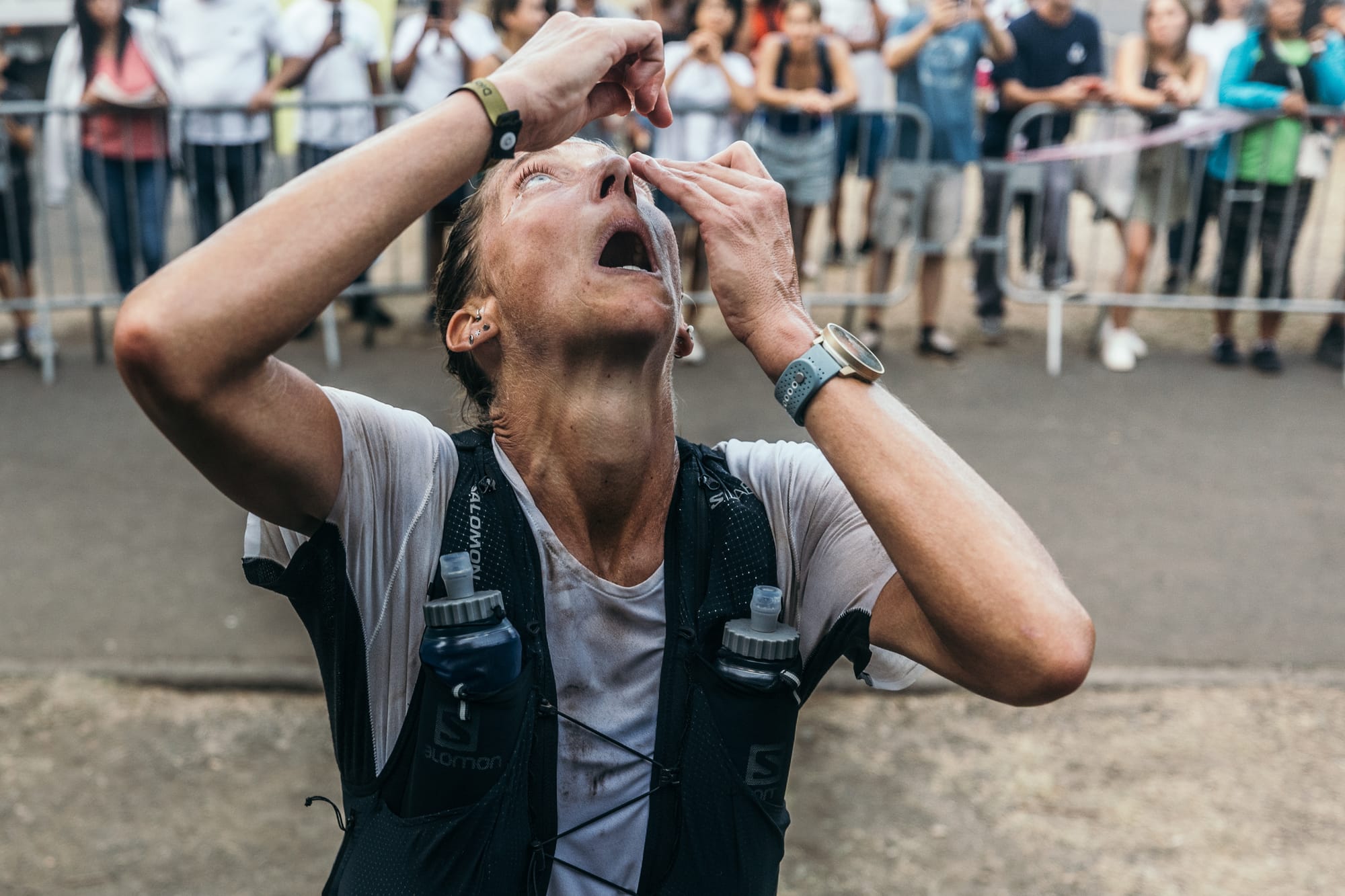
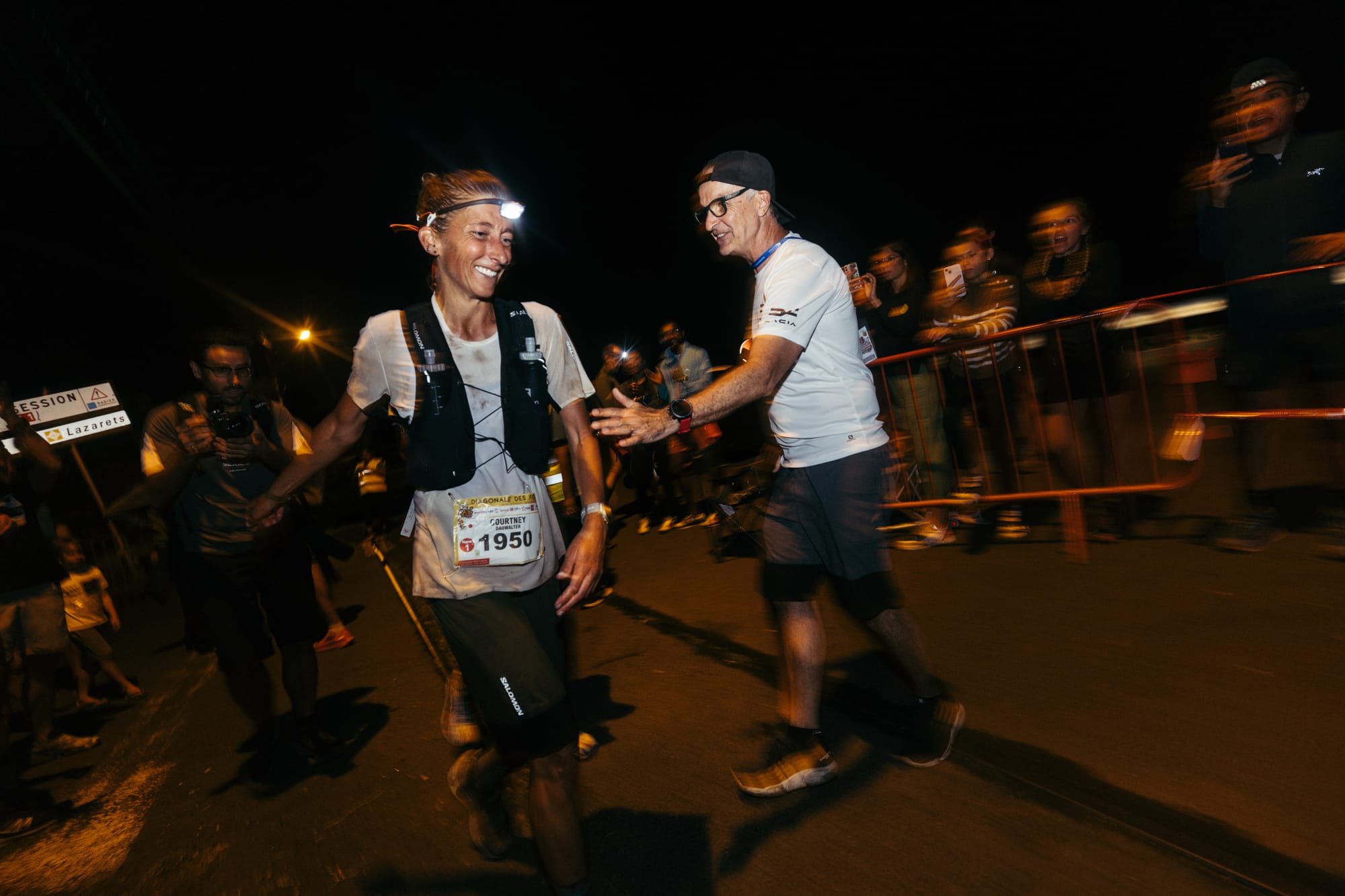
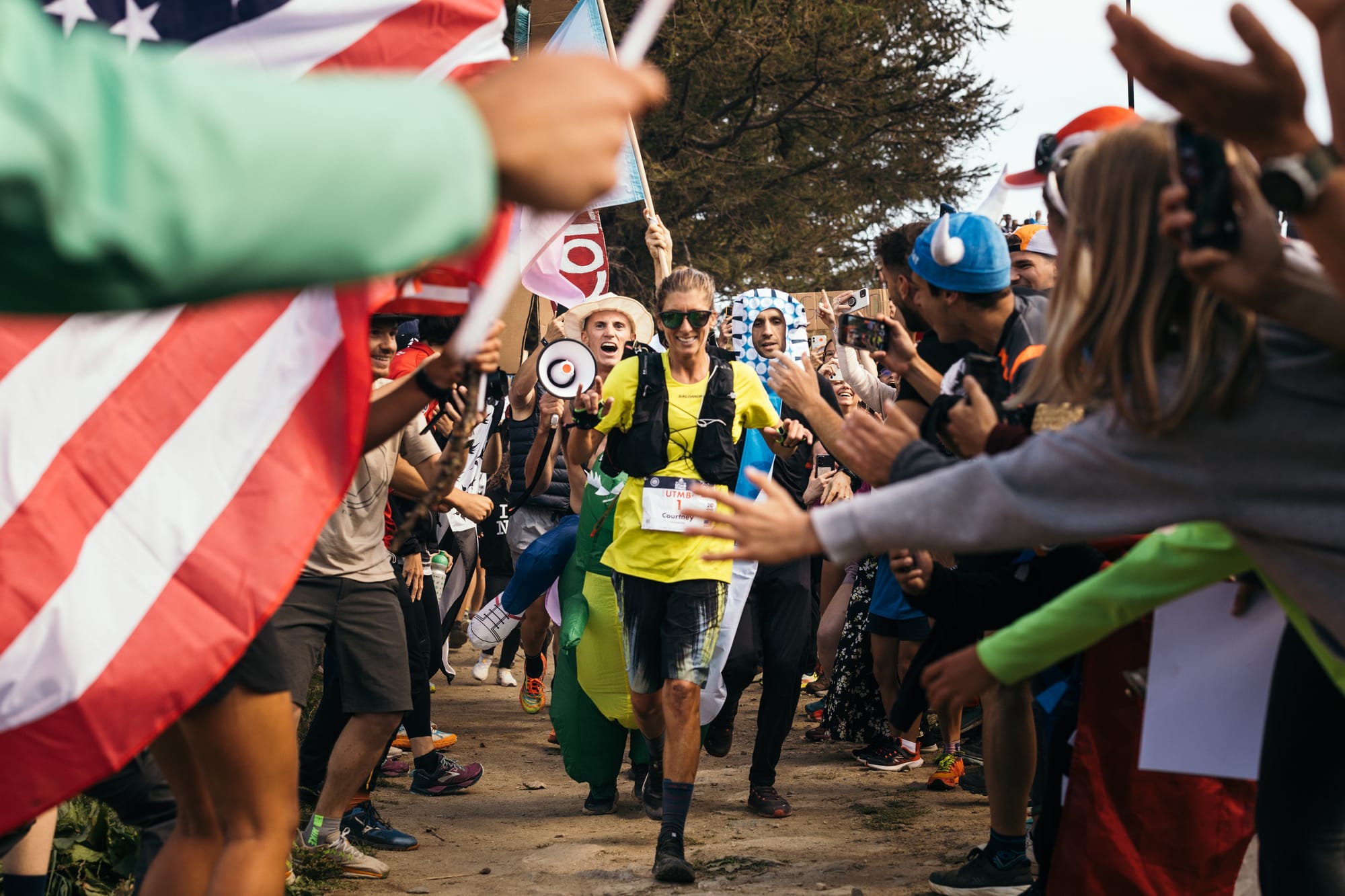
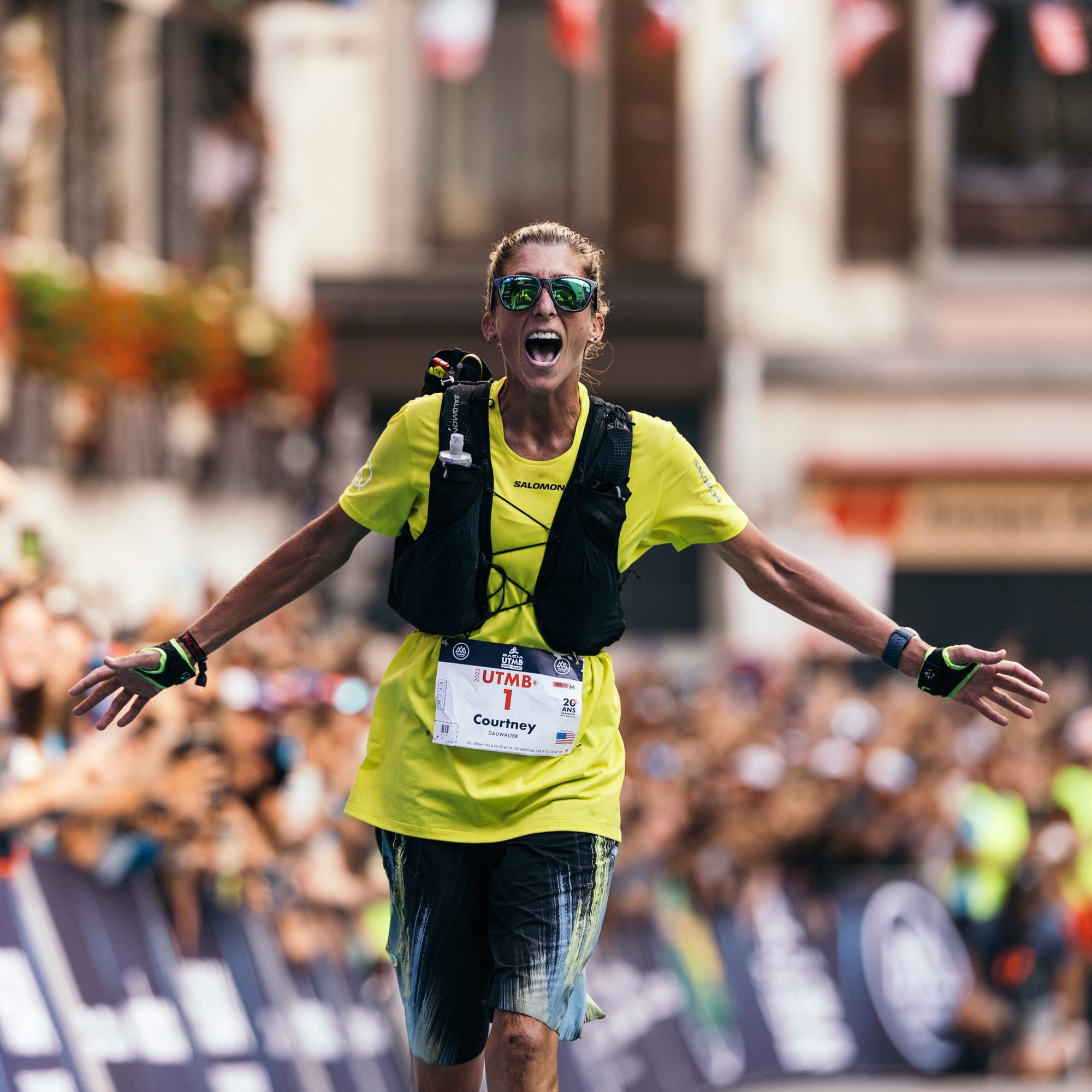
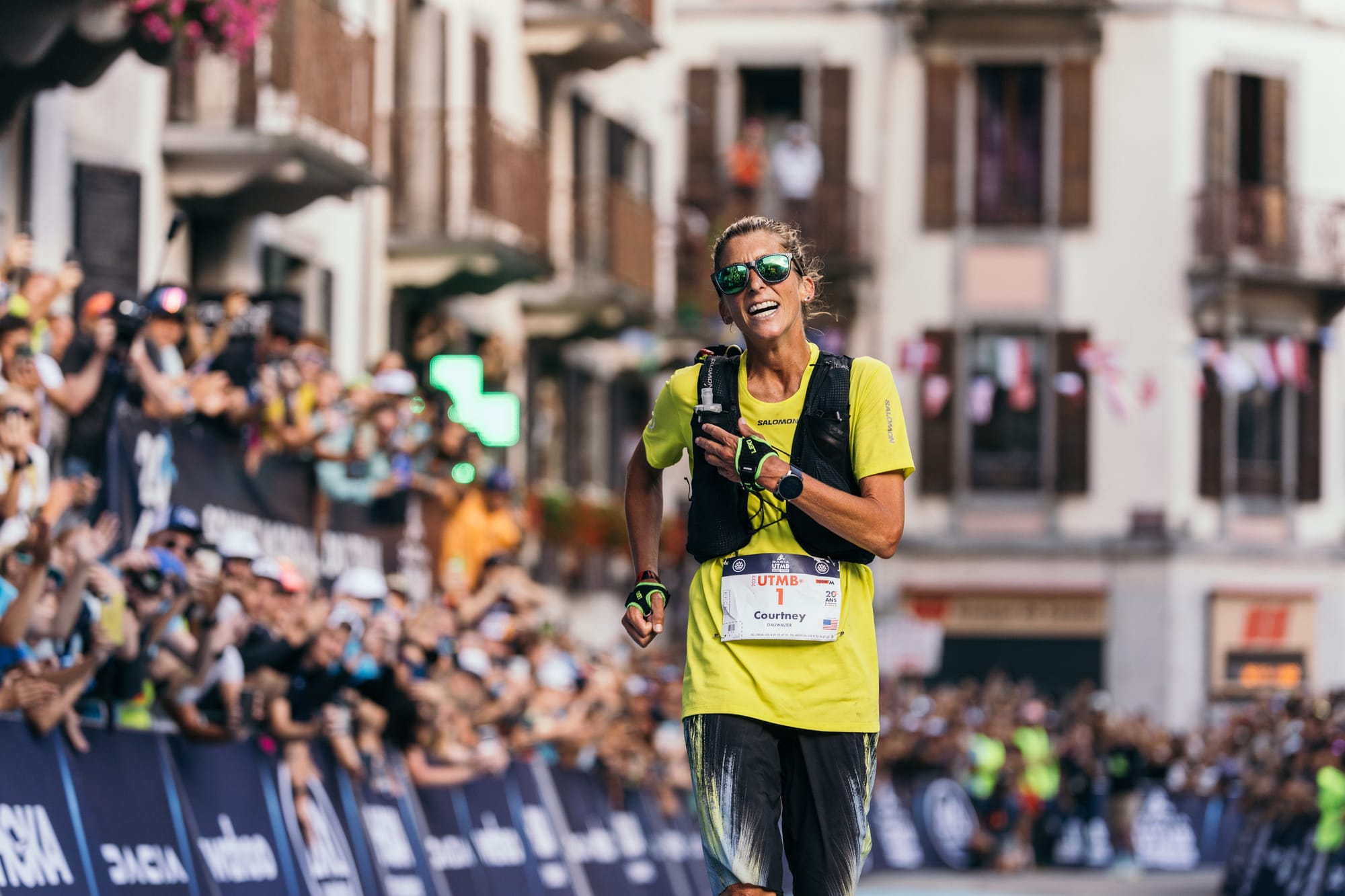
Dauwalter doesn't do spreadsheets. Instead, she listens to the voice inside her head. [Alexis Berg photos]
But it isn’t just the food – it’s the long shorts she wears during races that make her look like a member of Michigan’s Fab Five basketball team during the 1990s (her sponsor, Salomon, calls them “Shortneys”). It’s the brightly colored clothing, some of which is designed directly after the on-course hallucinations that she embraces like old friends. It’s the way she plays to the crowd, waving and shaking hands even when she’s barely got anything left to give – like in those final miles of the UTMB race, when her robotic mantra gave way to bear hugs 11 miles from the finish line.
And it’s Dauwalter’s training methods, which rely almost entirely on what she’s feeling from day to day instead of the draconian proscriptions of a trainer or a coach. She doesn’t utilize training apps like Strava; sometimes, she doesn’t even wear a smartwatch on her runs. She doesn’t worry about split-times and course records–she just runs the race the way her body and mind want her to run it, which is perhaps why she’s been able to shatter so many records.
For Dauwalter, it’s not about spreadsheets and data. She just listens to the voice that lives inside her head, and over the years, she’s learned how to channel it. At this time of year, in the offseason, when Leadville has a steady base of snow, that involves waking up, drinking a couple of cups of coffee, and doing what she calls “a systems check.”
“How is my body? How are my legs, my feet, all the physical parts?” she says. “But then also, Where's my head at? Where's my emotional self or my stressed-out self? What are all the dials sitting at right now? And that helps me determine how hard to push the gas pedal down for the day. Should we really go for it? Or do I need to have a little kindness for myself and pump the brakes a little bit?”
Dauwalter says that systems check is something we all could do, but we’re often so busy rushing around in the morning, getting ready for the day, that we don’t take the time to look inward. And in fact, it took her years to get that place herself–to be so attuned to her own instincts that she knows both what she wants and what she needs–and how to balance those two things.
Sometimes, pumping the brakes means going on a slow jog, mostly to enjoy the outdoors. Sometimes it means taking a full rest day. And for Dauwalter, a rest day doesn’t mean a little bit of cross-training: It means “sitting on the couch watching movies and reading a book and eating good food.”
“By good food,” I ask, “you mean eating nachos and things, or eating actually good-for-you food?”
“I think they’re one and the same,” she says.
Dauwalter grew up in Minnesota with a mother and father who dabbled in nearly every sport imaginable with their daughter and two sons. Courtney joined the cross-country team in seventh grade. Then she joined the nordic ski team in eighth grade. It was here that she found her passion–not just skiing, but the place where skiing could take her.
“I had an incredible cross-country ski coach in high school who not only taught me how to stay upright,” Dauwalter says. “He was also really big on helping us understand that when we got to that moment in a race where it felt like there was nothing left and we couldn't possibly push any harder, he always would just remind us, ‘You have one more gear. You always have one more gear. So when you get to that point, turn the knob and you'll find that there's more left in the tank for you.’ And it's a hard thing to teach to kids especially, but to anybody, because that feeling of being maxed out feels very much like, ‘That's it. That's all I've got.’”
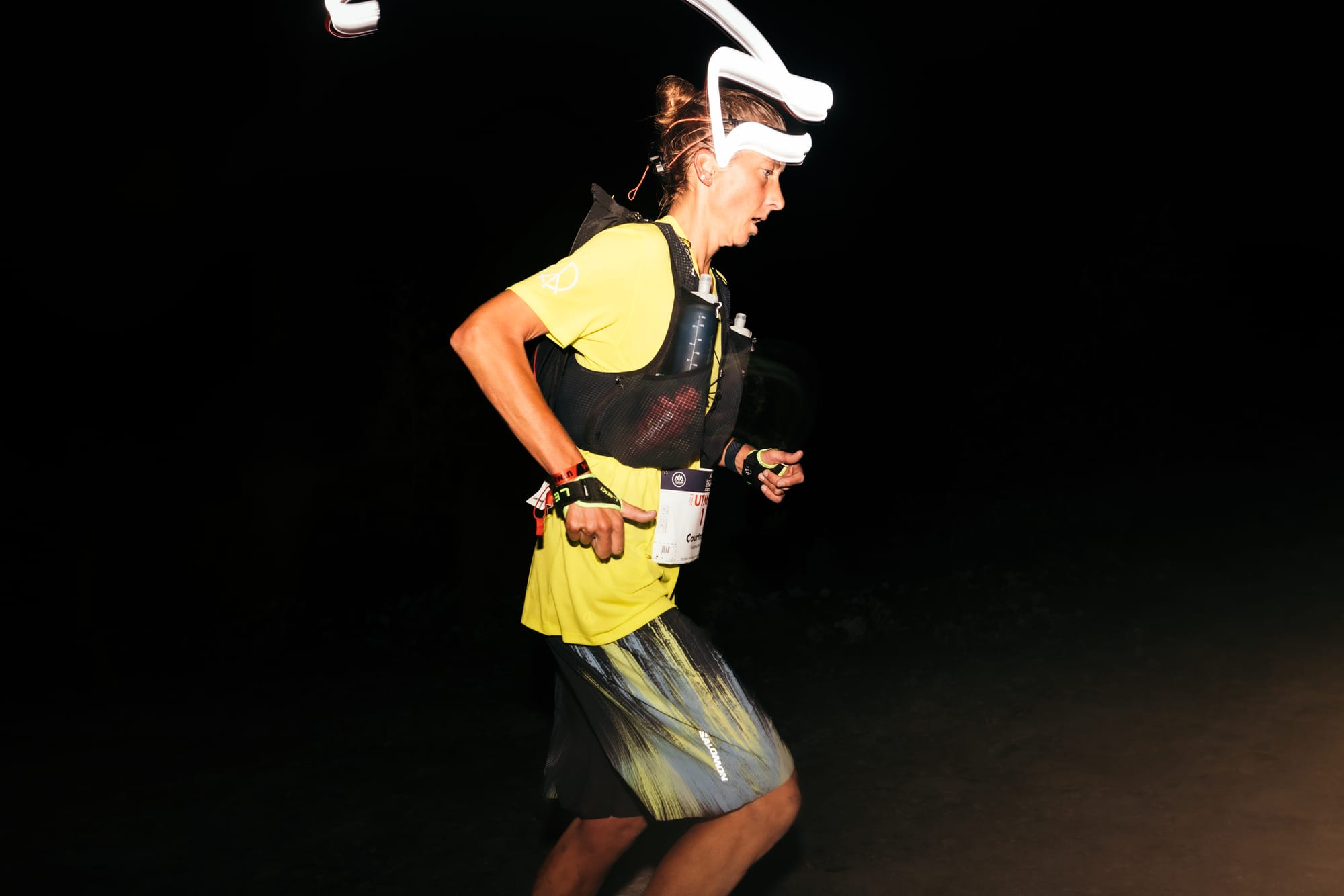
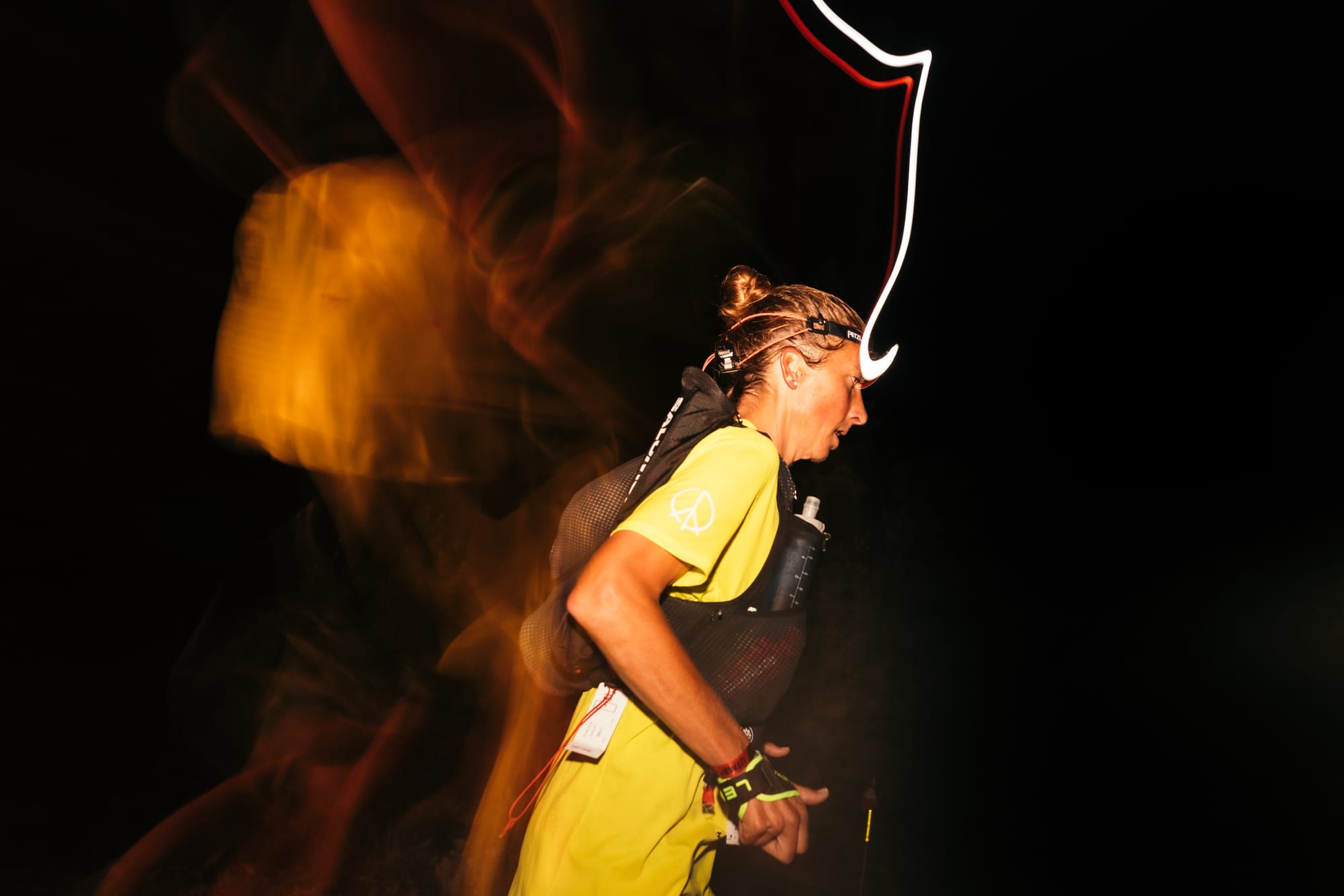
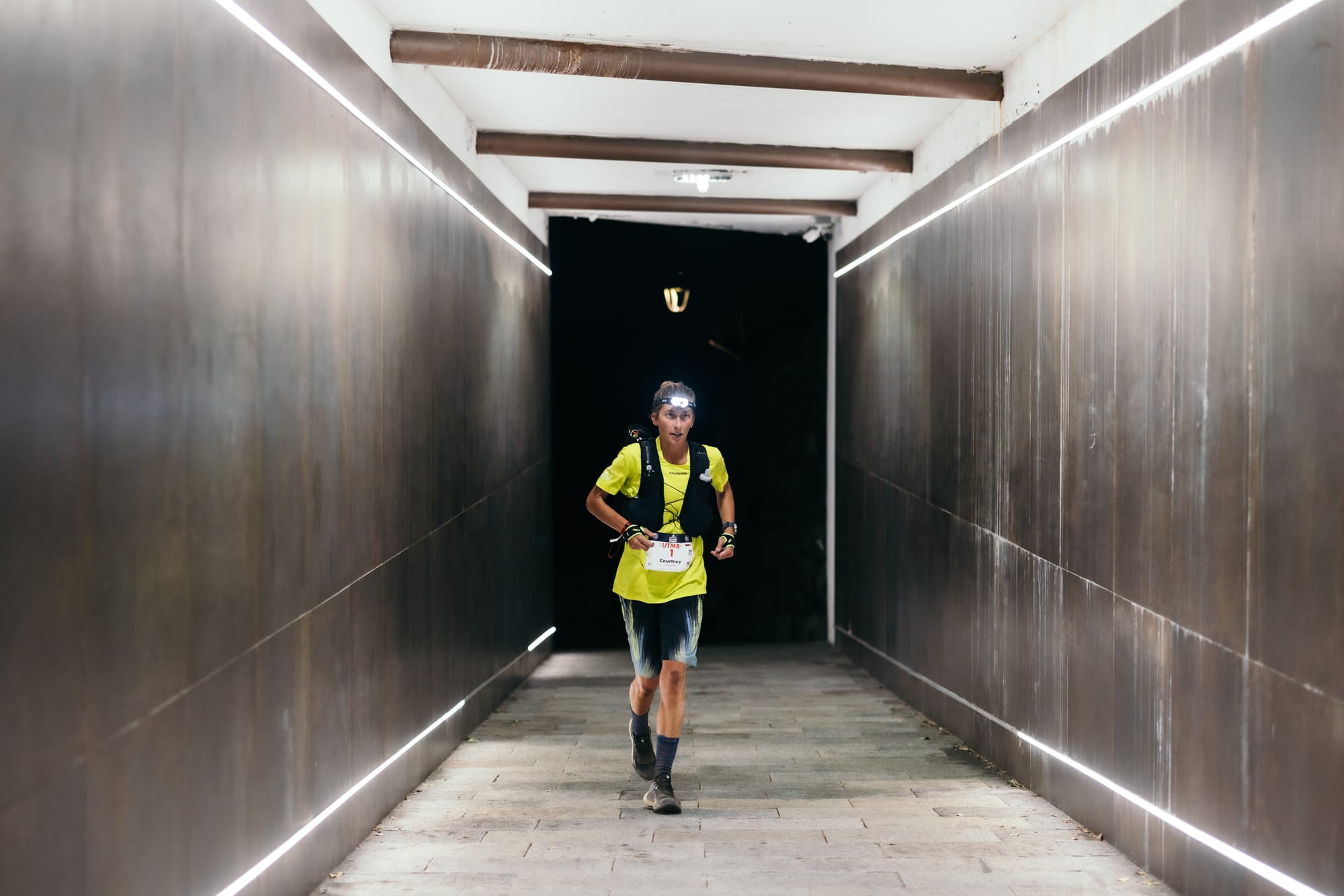
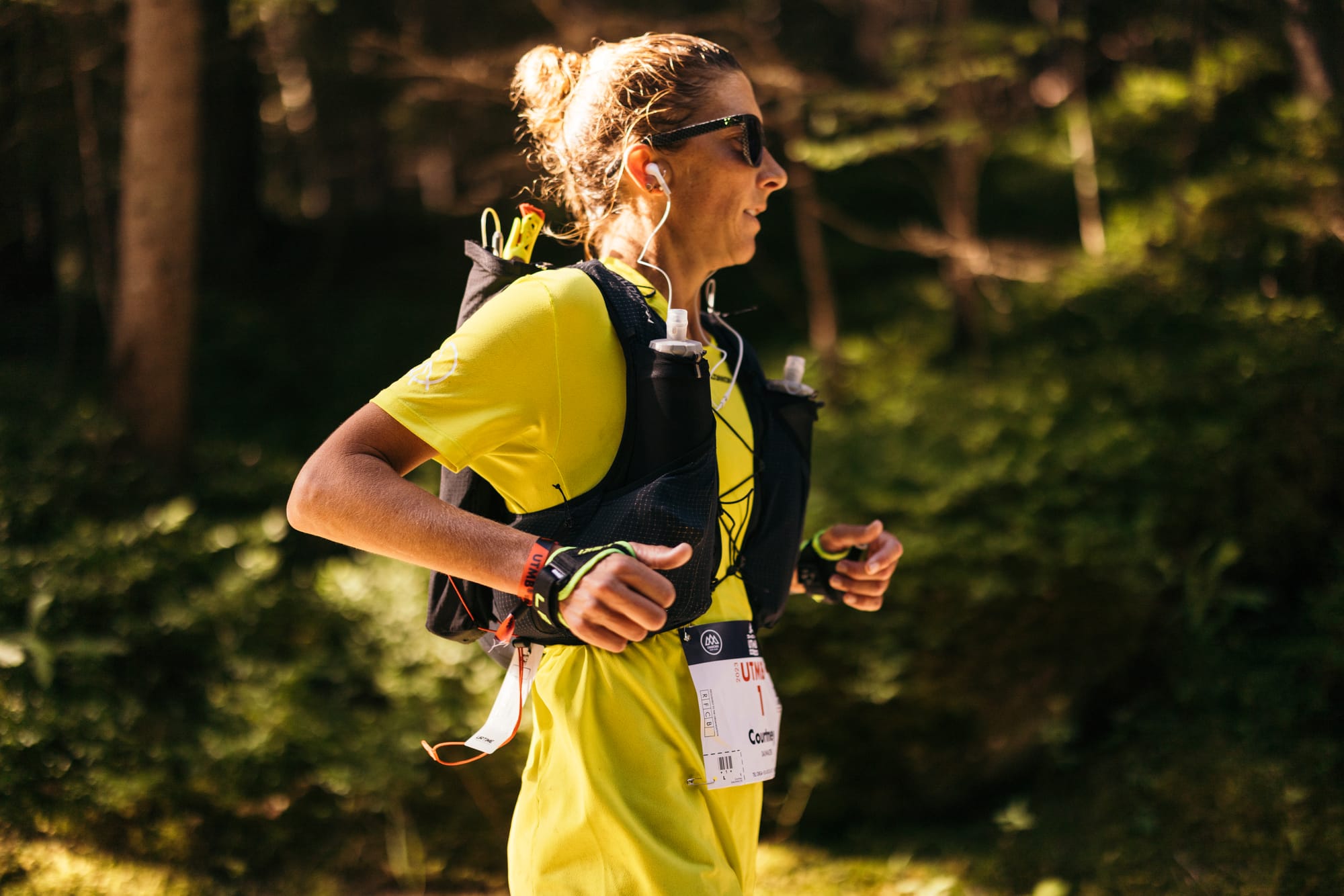
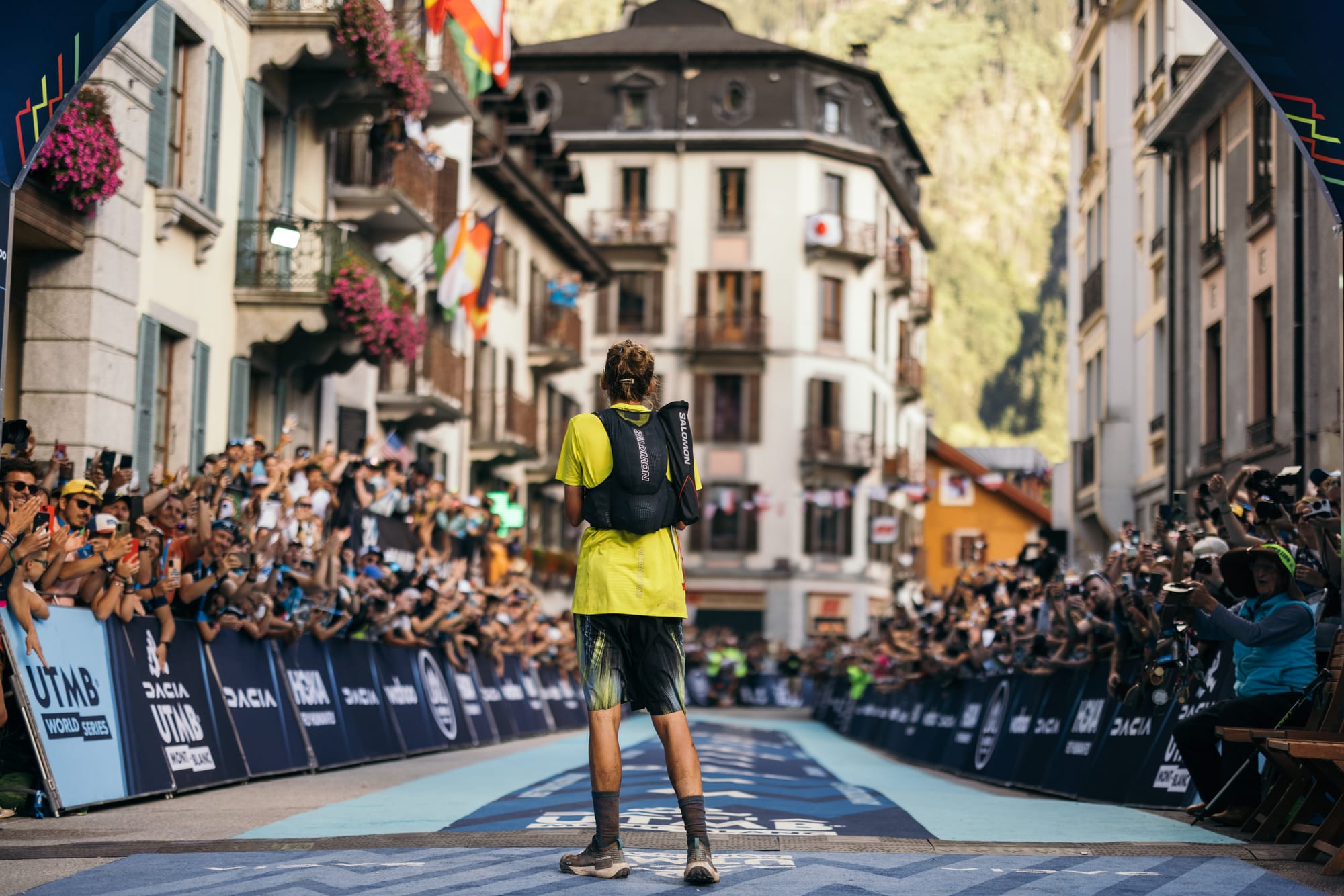
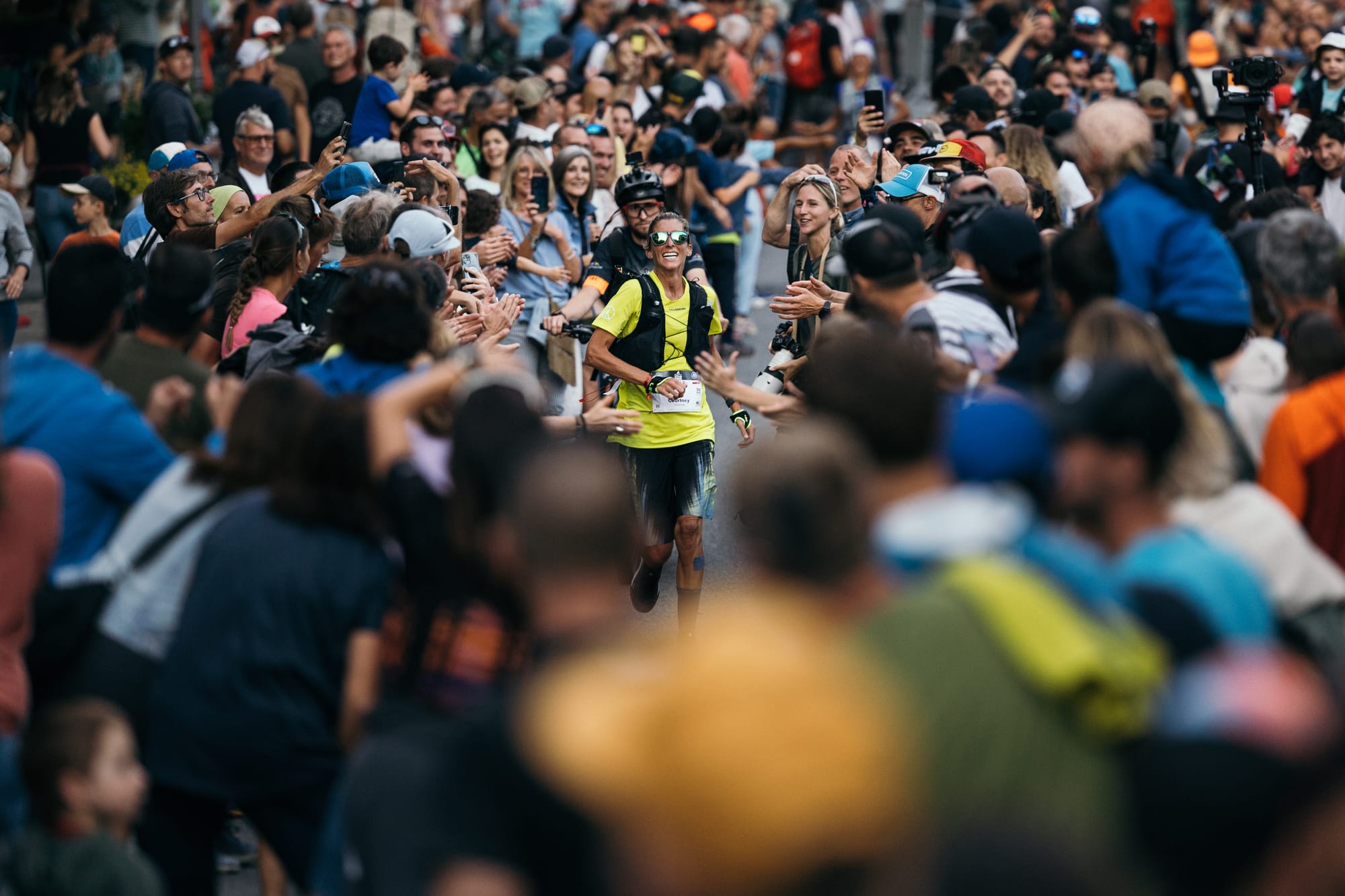
It wasn't until meeting her husband, a competitive runner and software engineer, that Dauwalter began to consider her limits. [Alexis Berg photos]
But Dauwalter trusted her coach, and she trusted herself. And sure enough, there it was: That next gear, which allowed her to become a four-time state champion and attend the University of Denver on a cross-country skiing scholarship.
After college, she went on to teach middle- and high-school science in Denver, where she met her husband, Kevin Schmidt, a competitive runner and software engineer who crews her races (just as she crews for him). And perhaps that scientific background – that natural curiosity about the possibilities of the universe – was what led Dauwalter to explore the limits of her own possibilities, to launch into a series of experiments on her own body.
She started running…and then running a little longer…
“Every new distance I would try sounded impossible,” she says. “There’s 50K races? Thirty-one miles? No way I can go 31 miles. And then when I did it, I’d say, ‘What else is out there that I can try that sounds impossible?’ So I think that’s part of it – just being surprised and curious. If you finish a distance that sounded impossible, then you’ve got to try the next thing, because you haven’t found what’s impossible yet.”
In 2017, without a sponsor, Dauwalter turned pro. But Salomon, seeing her potential, soon jumped on board. Over the course of nearly seven years in a sport that often chews up its stars and spits them out, Dauwalter’s body has managed to survive and endure, merely by doing things her own way.
And so last summer, Dauwalter decided to up the limits of what might be possible, by running two hundred-mile races over the course of three months, and then adding on the third to up the ante even further. In so doing, she expanded the limits of her “pain cave” – the metaphorical exploration of herself that Dauwalter likens to an actual cave. When inside, she puts on a metaphorical hard hat and chisels away, little by little, burrowing for more room to continue onward. Sometimes hallucinations creep in there, and they’re both terrifying in the moment and hilarious in retrospect: A trail covered in white cats, or a circle of hugging bears, or her sweat morphing into pomegranate seeds.
And during that race through the Alps last summer, she found a new element of the pain cave she didn’t even know existed.

“This time, no matter how hard I was chiseling at that cave wall, my body just couldn't respond,” she says. “I wanted it to. And so it was just a matter of forward motion at that point and not giving up on myself or my legs or the fact that we could make it to that finish line.”
That’s when the words came into her head: Robot robot. Robot robot. Robot robot…
All of it contrasted with what she calls the “classically fun” things happening outside of her body. The huge crowds. The people holding up signs. The people in blow-up animal costumes?
Wait, I say. Were there actually people out there in blow-up animal costumes, or were you hallucinating?
“Good question,” she says. “I should double-check the footage.”
That’s the thing: This was one of the toughest challenges of her career, and Dauwalter still found the fun in it. Not like LOL fun, but fun in the challenge itself. And to her, that matters most of all.
This is why she has no interest in ever adhering to some meticulous training plan. This is why she doesn’t want to adhere to some strict diet, and this is why she just wants to keep going at this for as long as she can, even as she’s already broken through barriers that pretty much no one in this sport else ever has. For Dauwalter, this really is all fine, even the torturous parts. And perhaps that’s what sets her apart from nearly every other ultrarunner who’s come before her–that it’s not about chasing away demons, but embracing them and welcoming them to her world.
“For my husband and I, we want to soak in as much joy and fun and memory-making in this life as possible,” she says. “And so for us, for me, that’s not linked to data or spreadsheets. That doesn't bring me joy, so I'm not going to use them. And for food, it's not worrying about certain food groups or cutting things out. That doesn't bring joy to my life, and so I'm not going to do that. And being in this sport and all of the training brings me a lot of joy, and so I want to keep doing that while it's bringing me those amounts of joy. I think we have our driver's seat, and we've got fun and joy in the front seats of our decisions and how we want to live our life.”
So where does she steer herself next?
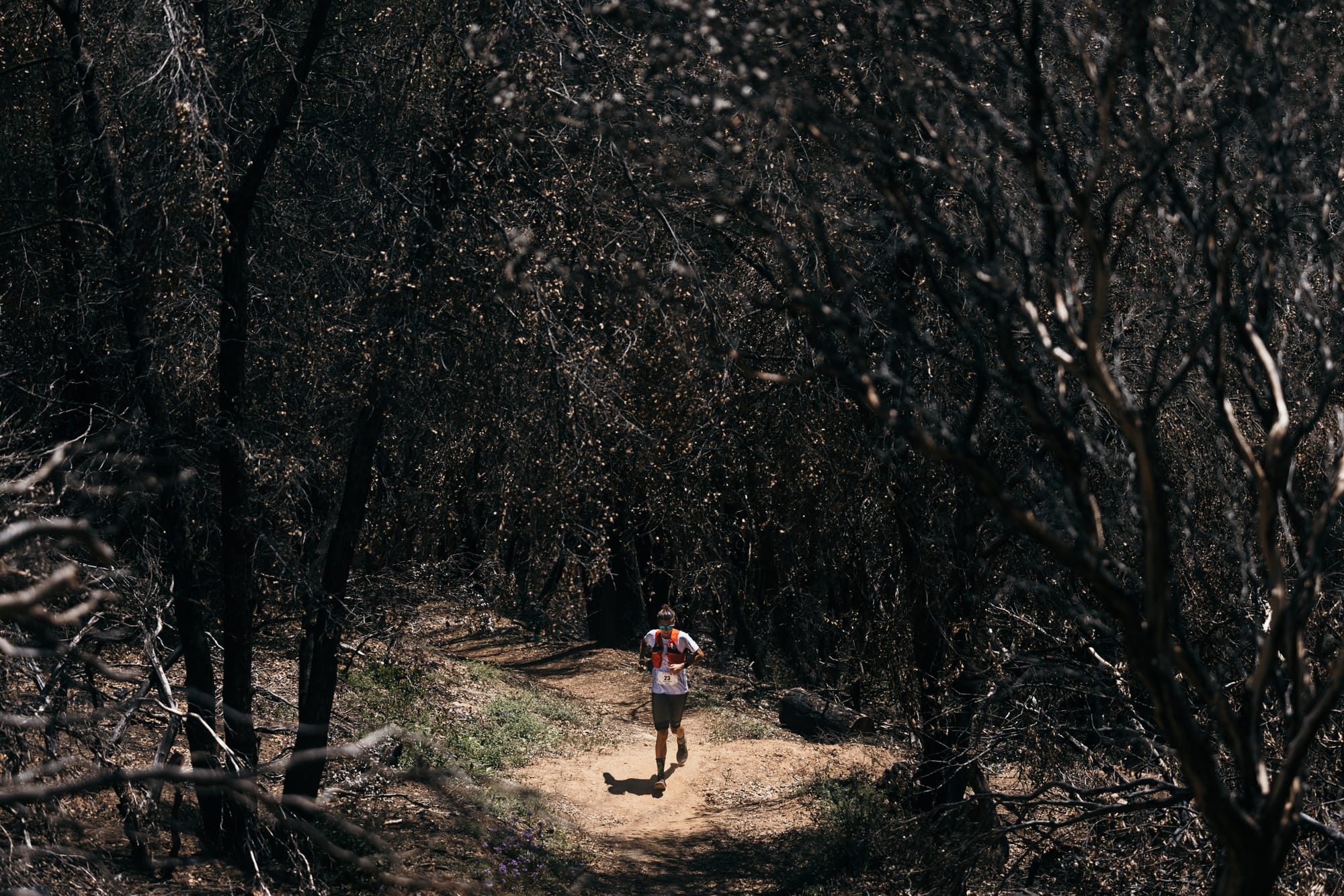
“I’ve been dreaming and scheming a bit, but I haven’t quite figured it out for sure,” she says. “I'm really interested in long distances, even longer than a hundred miles. I’m starting to tinker with the puzzle of sleeping during an event, if it's multi-day. Like, how do you keep moving efficiently? All of those pieces are interesting to me, so we'll see what happens.”
After Dauwalter’s remarkable summer was over – after she accomplished the impossible once, twice and a third time – she wanted to do something truly personal. She wanted to take one of her favorite people into the pain cave and show her around. On Halloween weekend of 2023, she and her 66-year-old mother, Tracy, ran side by side through the Sonoran desert in Arizona as part of the Javelina Jundred ultramarathon. And as they hit their third and final loop on the trail, Tracy began sharing her concerns about her ability to finish.
“Tell me all your doubts and frustrations,” Courtney told her. “You have one minute.”
So she did. And then they left them all behind in the dust of the desert.
“It felt pretty cool to know what she was feeling and how she was feeling,” Courtney says, “and then to be able to take her through some of the things I try in those moments.”
Seventeen hours and 38 minutes after they started, they crossed the finish line. What had once seemed impossible to Tracy Dauwalter was now a reality. Her daughter had taken her all the way there.
Advertising and sponsorship opportunities are available. Contact Jim Hoos at jhoos@r1s1sports.com or 602-525-1363.